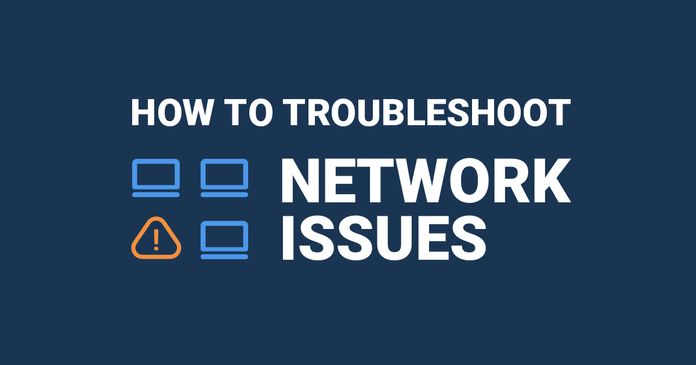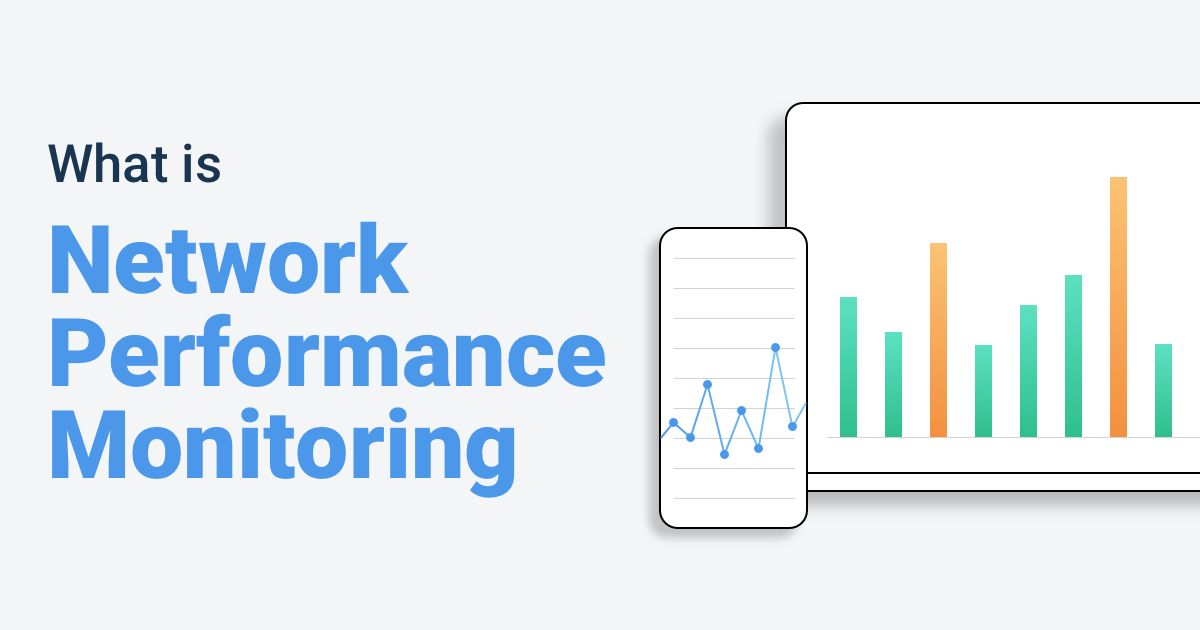Table of Contents
Table of Contents
Traditional centralized networks are a thing of the past—distributed networks have taken over. Why? Because they’re built to handle today’s cloud-based services and SaaS apps way more effectively.
In a world where businesses operate across the globe and data moves in real time, distributed networks have become the foundation of modern IT. With multiple interconnected nodes spread across different locations, these networks help companies manage massive amounts of data, keep services running smoothly, and support seamless collaboration.
But with great flexibility comes great responsibility. Managing and monitoring a distributed network isn’t always easy. IT teams and businesses need the right strategies to keep performance high, security tight, and connectivity rock-solid.
As networks evolve, so should the way we monitor them. That’s why we put together this guide!
In the past, companies with multiple sites used to rely on centralized network architecture to interconnect all business locations to one single, unified network.
But now that’s changed.
A distributed network, also known as a decentralized network, is a type of computer network architecture where data processing, storage, and communication tasks are distributed across multiple interconnected nodes.
Unlike traditional centralized networks, where all processing and decision-making occur at a central server or data center, distributed networks rely on a network of nodes that work collaboratively to achieve common goals.

Distributed networks are commonly used in various applications, including peer-to-peer (P2P) file sharing systems, blockchain networks (like Bitcoin and Ethereum), content delivery networks (CDNs), cloud computing infrastructures, and some types of modern Internet architectures (SD-WAN, Hybrid, Dual-WAN, SASE, Internet Multihoming).
- The Internet: A massive distributed network where data travels between millions of servers and devices worldwide.
- Content Delivery Networks (CDNs) Services like Cloudflare or Akamai store website data on multiple servers globally to improve loading speeds.
- Blockchain Networks: Cryptocurrencies like Bitcoin use decentralized nodes to validate transactions.
- Cloud Computing: Platforms like AWS, Azure, and Google Cloud distribute computing resources across multiple data centers.
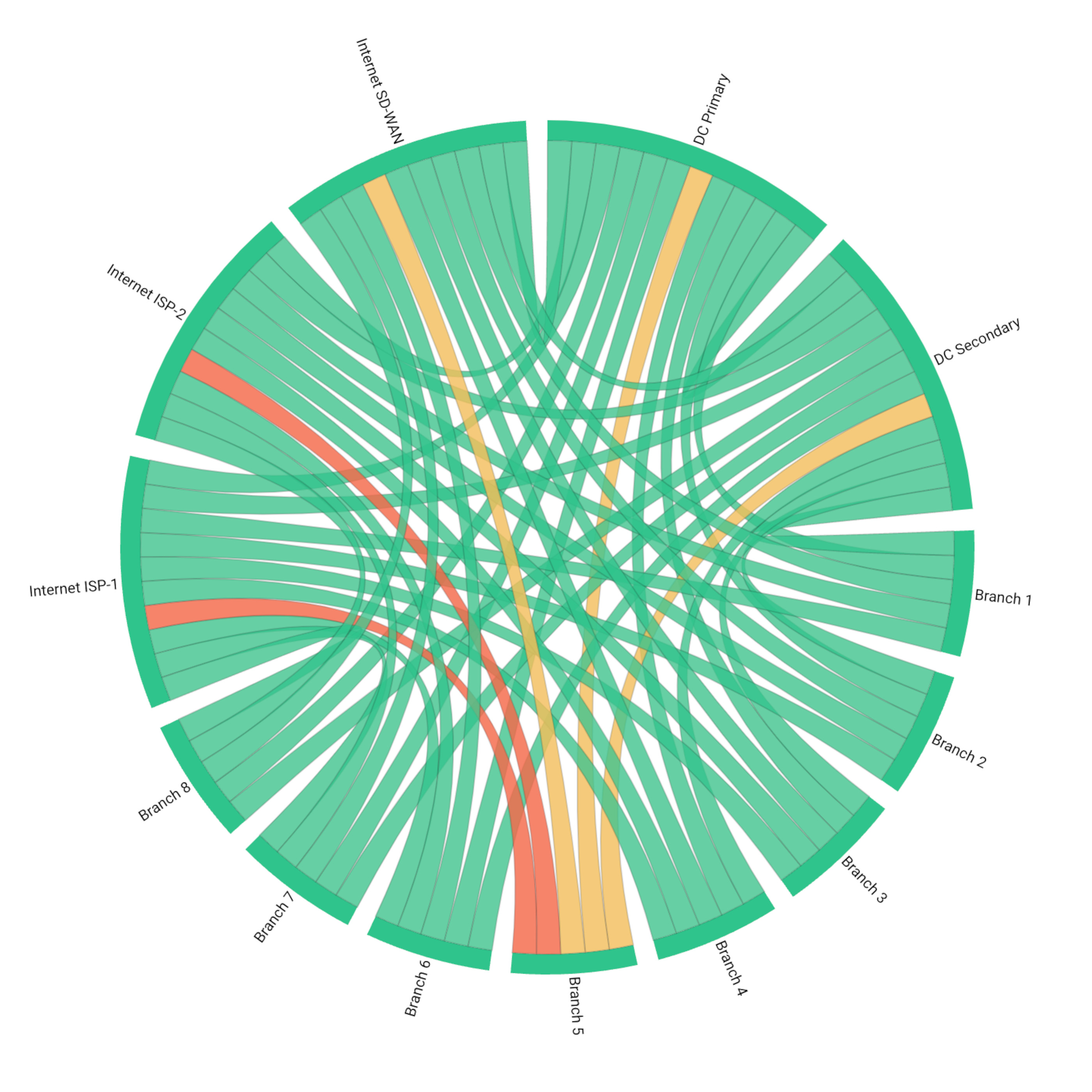 Chord Diagram from Obkio's Distributed Network Monitoring Tool
Chord Diagram from Obkio's Distributed Network Monitoring Tool
Rather than relying on a single central server, distributed networks share the workload across multiple devices. If one node fails, others can take over, making the network more reliable, scalable, and efficient.
- Decentralization: There is no single central authority or point of control. Instead, the decision-making and data processing are spread across multiple nodes, which can be located in different geographical locations.
- Redundancy: Distributed networks often incorporate redundancy, meaning that multiple nodes can perform the same tasks or store the same data. This redundancy enhances fault tolerance and ensures that the network remains operational even if some nodes fail.
- Scalability: Distributed networks are highly scalable, as new nodes can be added to the network to increase its capacity and handle growing demands. This makes them suitable for large-scale applications and services.
- Load Balancing: To optimize performance, distributed networks use load balancing algorithms that distribute data and processing tasks evenly among the nodes. This prevents bottlenecks and ensures efficient resource utilization.
- Resilience: Distributed networks are inherently resilient because the failure of a single node does not bring down the entire network. The remaining nodes can continue to function, maintaining network operation.
Their ability to provide high levels of redundancy, scalability, and fault tolerance makes distributed networks a popular choice for systems that require robustness, flexibility, and efficient handling of large amounts of data across vast geographical areas. However, managing and monitoring these networks can be more complex due to their decentralized nature, requiring specialized tools and strategies to ensure optimal performance and security.
To understand how to monitor a distributed network, and the challenges that come with you, it's important to understand what a distributed network looks like, and how it works.
In a distributed network, each node typically has its own computing resources, such as processing power, memory, and storage, which allows them to function autonomously. These nodes communicate and share data with one another, creating a network that can handle large-scale data processing and support complex applications.
These sites can be physically segregated from each other but combined via the Internet so that, if one system breaks or is overloaded, the others can remain to work without being impacted. This makes them more flexible, secure, and reliable than centralized networks.
The operation of a distributed network can be broken down into several key components:
- Nodes: Nodes are the individual units that make up the distributed network. Each node is a self-contained computing device with its own processing power, memory, and storage capabilities. These nodes can be computers, servers, smartphones, IoT devices, or any other device capable of connecting to the network.
- Communication: Nodes in a distributed network communicate with each other through data transmission protocols. This communication allows them to share information, request services, and coordinate tasks.
- Decentralization: One of the defining features of distributed networks is their lack of a central point of control. Each node operates autonomously and makes its own decisions based on local information and, in some cases, shared information from other nodes.
- Data Distribution: Data in a distributed network is often distributed across multiple nodes. Each node may store a portion of the data or replicate the data shared by other nodes. This data distribution ensures redundancy and fault tolerance, as the network can still function even if some nodes fail.
- Load Balancing: To optimize performance and prevent bottlenecks, distributed networks use load balancing techniques. Load balancing ensures that tasks and data are distributed evenly across nodes, maximizing resource utilization and minimizing response times.
- Consensus Mechanisms (in some cases): In distributed networks like blockchain, where maintaining a shared ledger is crucial, consensus mechanisms are used. These mechanisms enable nodes to agree on the validity of transactions and ensure the integrity of the network.
- Fault Tolerance: Distributed networks are inherently resilient to failures because of their decentralized nature. If a node fails or becomes unreachable, the rest of the network can continue to function, ensuring high availability.
- Scalability: Distributed networks are highly scalable, as new nodes can be added to the network to accommodate increasing demands. This allows the network to grow in size and capacity as needed.
- Security: Distributed networks often employ various security measures to protect data and prevent unauthorized access. The decentralized structure can enhance security, as there is no single point of attack.
Overall, the distributed network's strength lies in its ability to handle large-scale data processing, provide fault tolerance, and support complex applications in a decentralized and resilient manner. These networks are well-suited for applications requiring high availability, scalability, and data redundancy, making them increasingly prevalent in today's interconnected world.
Why are distributed networks so popular?
With the increasing use of SD-WAN networks, SASE architectures, and Cloud apps, more companies are adopting Distributed Networks.
Distributed networks increase network performance in the cloud, increase flexibility and scalability, and decrease bottlenecks.
Distributed networks also complexify data flows between sites, meaning that traditional monitoring tools, which only monitor from a centralized location to a site, but not between the sites (branches, clouds etc.) themselves, can’t properly monitor distributed networks.
The image below shows you the complexity of monitoring Distributed networks:
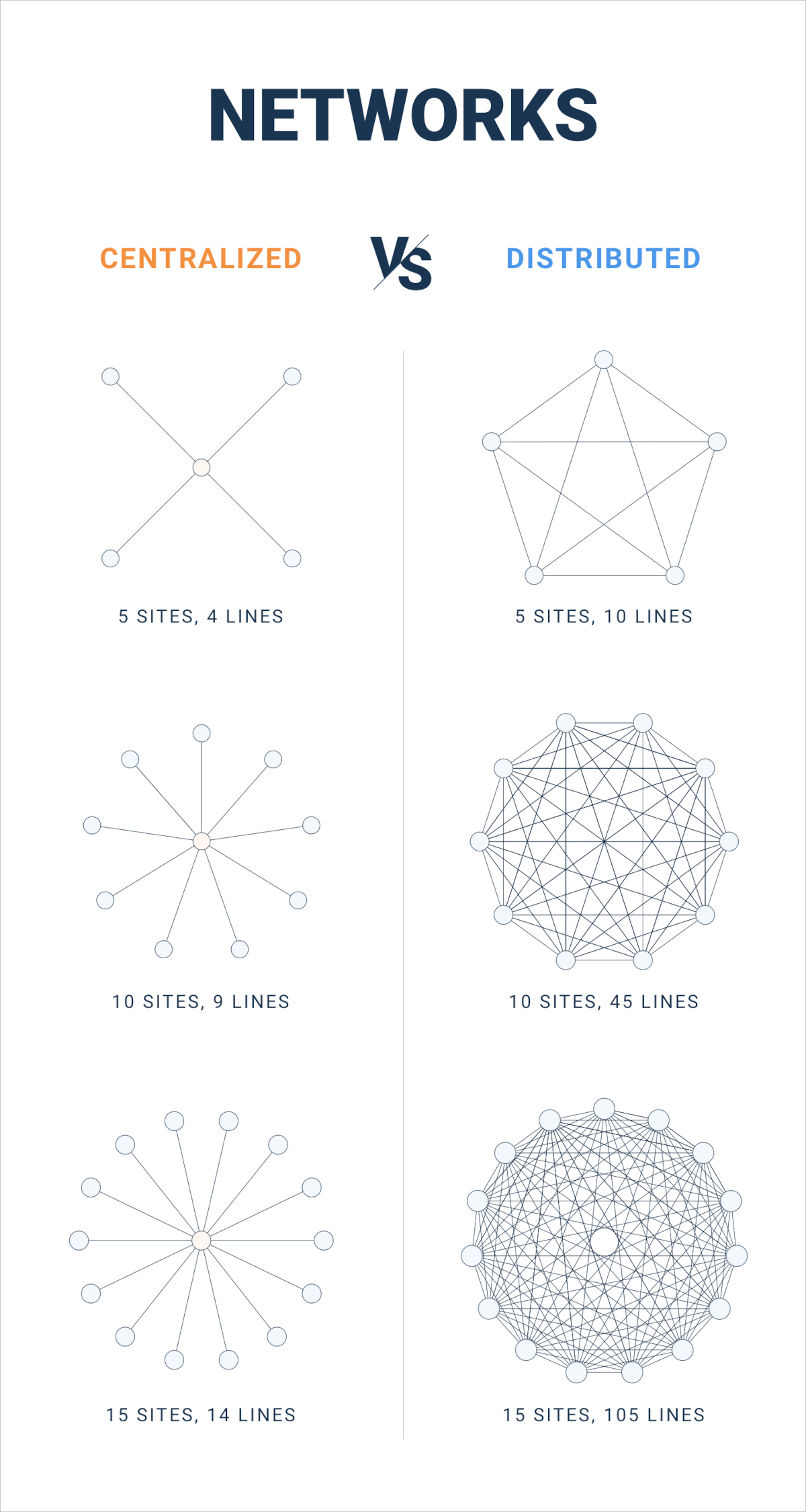

Wondering why performance monitoring is hard in a distributed network?
Adding network locations to a distributed network will only make the network data flows more complex.
As we can see from the infographic above, with the same number of sites, distributed networks have 90 more communication paths (lines) than centralized networks, all which can be affected by poor network performance.
Traditional monitoring solutions would not be able to identify issues along these additional paths. Traditional monitoring tools are built to operate in a centralized environment, where all data is collected and processed from a single point (central server or data center). In distributed networks, data is spread across multiple nodes, making it challenging for traditional tools to gather data from various locations.
Distributed networks can involve a large number of nodes spread across different geographic locations. Traditional tools may struggle to scale efficiently to handle the high volume of data generated by numerous nodes.
Some of the key challenges of monitoring distributed networks include:
- Network Complexity: The interconnectivity of nodes and multiple data paths in distributed networks increase complexity. Understanding and visualizing these interconnections demand advanced monitoring solutions.
- Scalability: Distributed networks can consist of a large number of nodes spread across different locations. Monitoring each node's performance and managing a vast amount of data can be challenging, particularly as the network scales.
- Data Collection and Synchronization: Collecting data from distributed nodes in real-time and synchronizing it across the monitoring system can be difficult. Ensuring data consistency and accuracy becomes crucial for making informed decisions.
- Network Latency: Latency issues can arise in distributed networks, affecting data collection and communication with remote nodes. Monitoring latency itself requires sophisticated tools and techniques.
- Intermittent Connectivity: Nodes in distributed networks may experience intermittent connectivity issues due to various factors like network disruptions or device failures. Handling data gaps during such network outages can be problematic.
- Alert Management: Managing network monitoring alerts from various nodes and filtering out false positives can be tricky, ensuring that important alerts don't get overlooked.
But, we have a solution to these problems!
Whether it’s a traditional network or distributed network, when you want to measure network performance, the measurement is always between two points in a network.
The challenge with distributed networks vs. centralized networks is the larger number of communications paths. Those paths don’t always pass through the centralized locations, which is why you need to monitor performance from all the remote locations, and not through a centralized location.
Whatever two points you choose, you need something to monitor every location. To do so, you need local tools continuously running tests at every network location.
You need an Agent-Based monitoring solution.

Monitoring and troubleshooting five or more network locations, including remote offices, data centers, and remote employees, is difficult to do without the right software.
A modern distributed network performance monitoring software, like Obkio, is an Agent-based solution designed to monitor modern distributed networks for:
- SD-WAN Networks and Dual-WAN networks
- Wide WAN Networks - 5 Locations or More
- Cloud-based Applications and Services (SaaS Apps)
- Multiple Office, Branch, and Data Center Locations
- Remote Employees
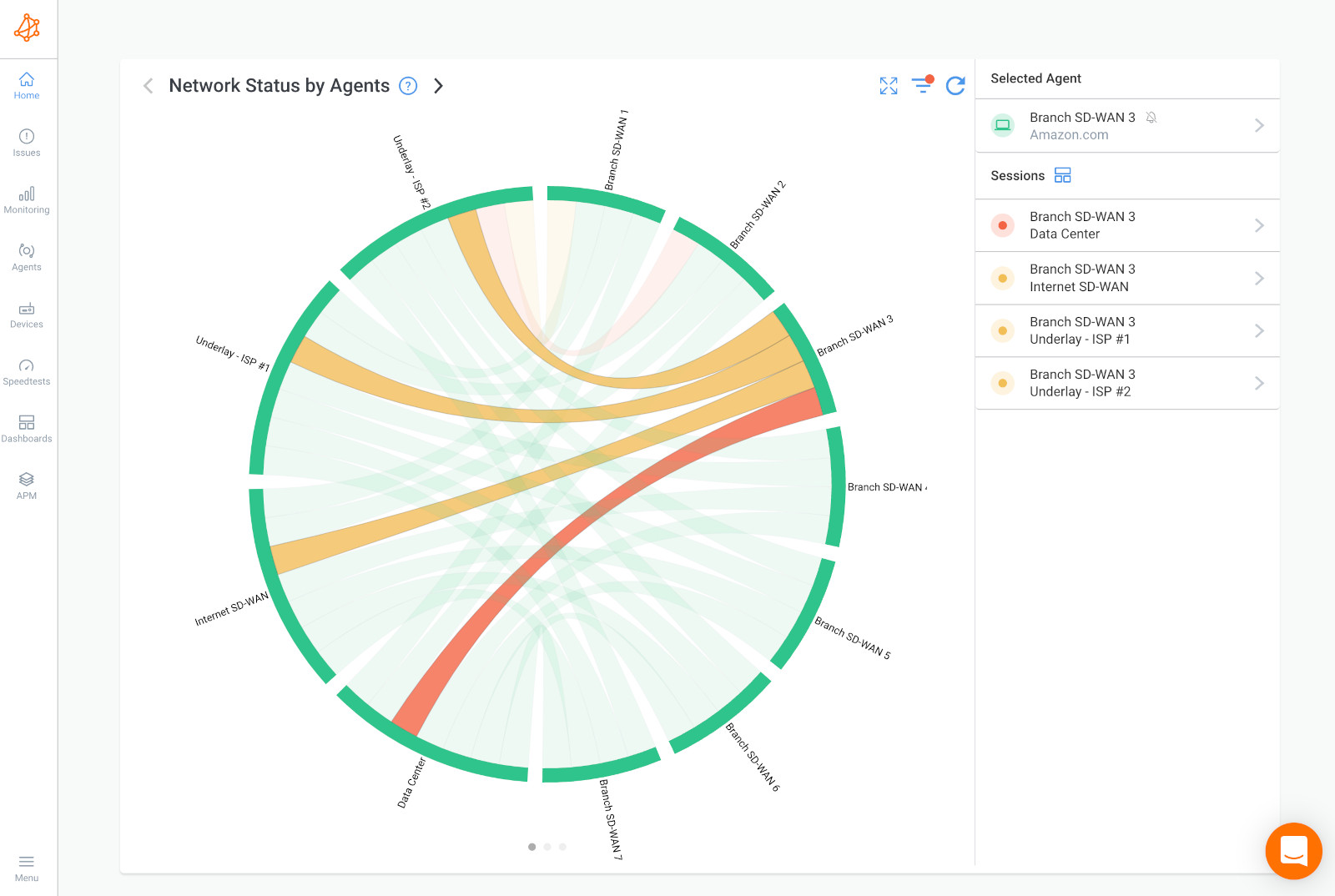
Obkio: Your Gateway to Seamless Distributed Network Monitoring!
- Real-time Visibility: Obkio's cutting-edge monitoring tool grants you real-time visibility into every nook and cranny of your distributed network. Say goodbye to blind spots and hello to swift detection of potential issues before they spiral into network nightmares.
- Unravel the Tangled Web of Performance: Unleash the power of Obkio's intuitive performance metrics and unriddle the mysteries of your distributed network's health. From latency analysis to bandwidth consumption, our tool arms you with the insights needed to optimize your network like never before.
- Multi-node Simplicity, Multi-node Success: Embrace the ease of monitoring multiple nodes in your distributed network from a single, centralized dashboard. Obkio streamlines your monitoring efforts, allowing you to effortlessly oversee diverse nodes and maintain network harmony with just a few clicks.
- Proactive Network Management: Embrace the power of proactive network management with Obkio's intelligent alerting system. Our tool keeps you informed and alert, notifying you of anomalies and bottlenecks, so you can act swiftly and avert network disruptions like a true network hero.

You need to monitor your distributed network to get visibility of every network site and communication path to identify issues. To do that, you need to run performance tests from all the network sites directly.
Obkio monitors distributed networks using a unique software, called Monitoring Agents. Monitoring Agents are a unique software installed at every end of your distributed network to monitor every decentralized location, to identify network issues happening in every location, application, or over the Internet.
They exchange Synthetic Traffic between each other every 500ms to monitor performance between every single network location like:
- Branch offices
- Head offices
- Data centers
- Clouds
- And the Internet
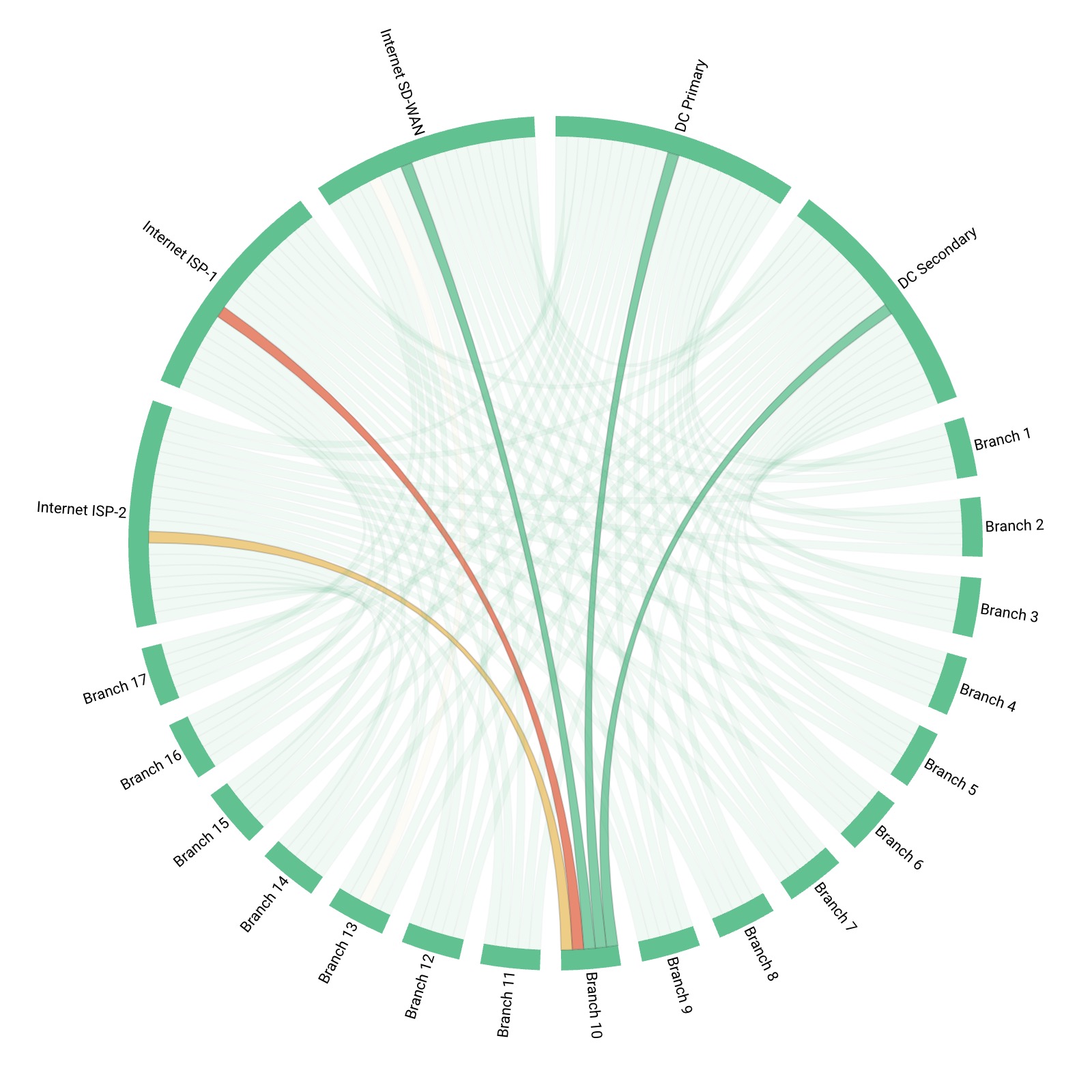
The Monitoring Agents measure network metrics, alert you of network problems, and collect information to help you troubleshoot internally or with your service provider.
While it's recommended to deploy Monitoring Agents in every decentralized network location, to begin Obkio's Onboarding Wizard will first help you dpeloy:
- Local Agents (Windows, MacOS, Linux, Hardware) are installed at key network locations such as branch offices, data centers, remote locations to monitor performance.
- Public Monitoring Agents are Agents installed in Service Provider networks (like AWS, Google, Azure). They can be used to monitor the performance of any branch externally towards the Internet (without passing through the head office).
You can set this up in just 10 minutes!
Once Obkio's Monitoring Agents are installed throughput your distributed network, they will start continuously exchanging synthetic traffic to measure network metrics between each other.
Network performance is usually measured between two points in the network, so in a distributed network, this means that Obkio's Agents with measure network performance of all network connections. For example:
- Between Your WAN and LAN (LAN monitoring)
- Between Your Head Office and Branch Office
- Between a Branch Office and the AWS Cloud
To monitor network performance, the Agents will measure key network metrics like:
- Latency: Measure the time it takes for data packets to travel between nodes in the distributed network. High latency can impact application responsiveness and user experience.
- Packet Loss: Monitor the percentage of packets lost during transmission. Packet loss can result in data retransmissions and degrade network performance.
- Bandwidth Utilization: Track the amount of network bandwidth consumed by each node. Understanding bandwidth usage helps in capacity planning and optimizing data flow.
- Throughput: Measure the rate at which data is transmitted between nodes. Throughput indicates the network's data-handling capacity.
- Network Jitter: Monitor the variation in latency over time. Jitter can affect real-time applications and VoIP communications.
- Round-Trip Time (RTT): Calculate the time it takes for a data packet to travel from the sender to the receiver and back. RTT is crucial for measuring network responsiveness.
- Error Rates: Measure the frequency of errors, such as CRC errors or retransmissions, to identify potential network issues.
- Network Congestion: Monitor the presence of network congestion or network overload, which can lead to performance degradation and delays.
- Response Times: Measure the time it takes for applications and services to respond to user requests. Longer Network response times may indicate performance issues.
- Availability and Uptime: Track the network availability and uptime of each node in the distributed network to ensure continuous service delivery.
- Resource Utilization: Monitor CPU, memory, and disk utilization on individual nodes to identify potential resource bottlenecks.
- Application-specific Metrics: Track application-specific metrics relevant to your distributed network's use case and requirements.
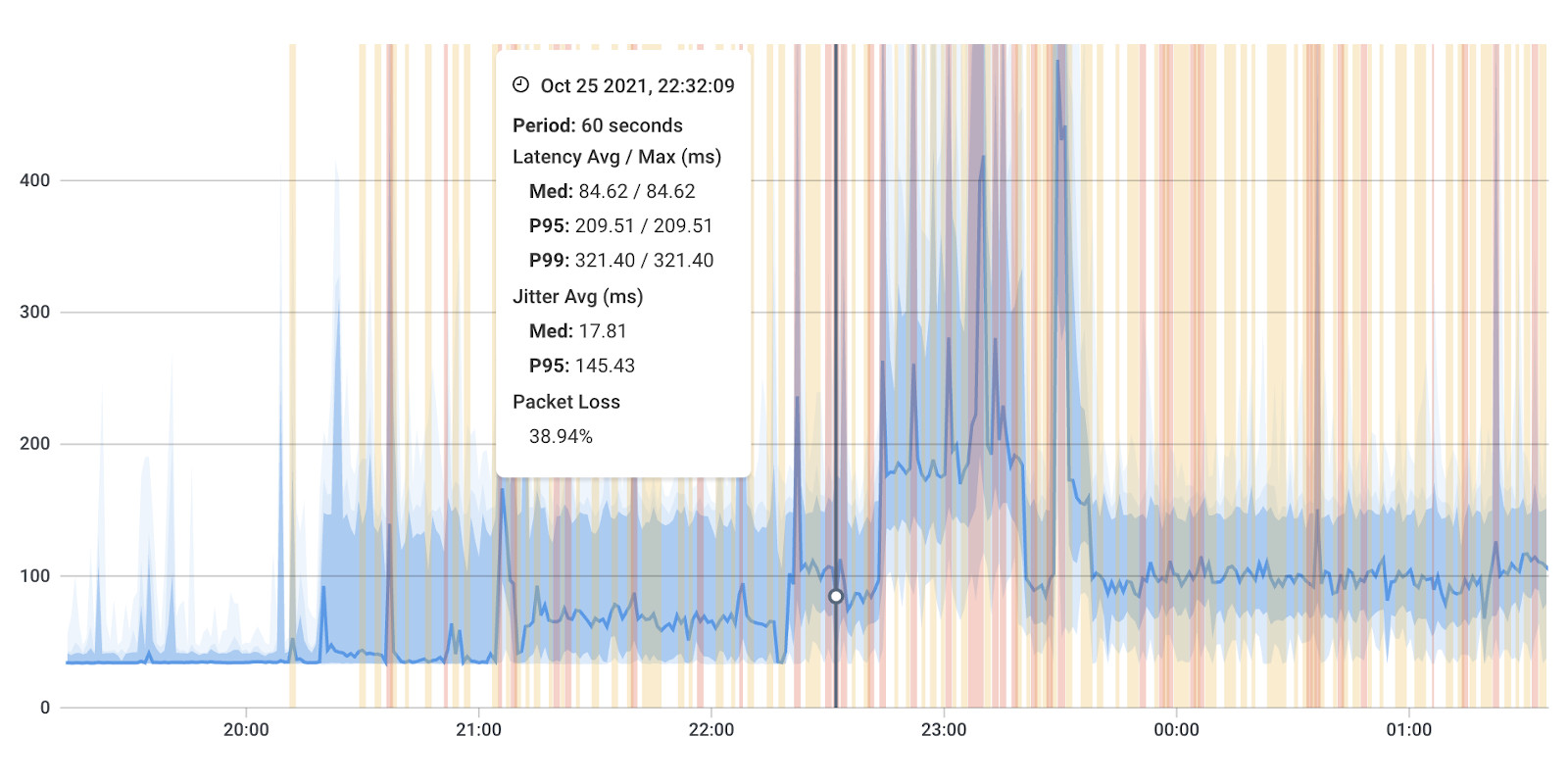
When managing a distributed network with multiple locations, some of which may be in remote or hard-to-reach areas, having on-site IT staff at every location can be challenging and expensive. However, with Obkio's Agents-Based network monitoring, you can virtually extend your IT team to each network location without the need for physical presence.
Obkio's Monitoring Agents act as virtual IT staff deployed on each node within the distributed network. These lightweight software agents continuously measure network performance, collecting essential metrics such as latency, packet loss, and throughput. The collected data is then securely sent to Obkio's cloud-based SaaS application for centralized monitoring and analysis.
This way, your remote IT staff can analyze the network status and identify network problems in the Cloud using Obkio’s Chord Diagram and dashboards. They can even collect information to troubleshoot network issues remotely.
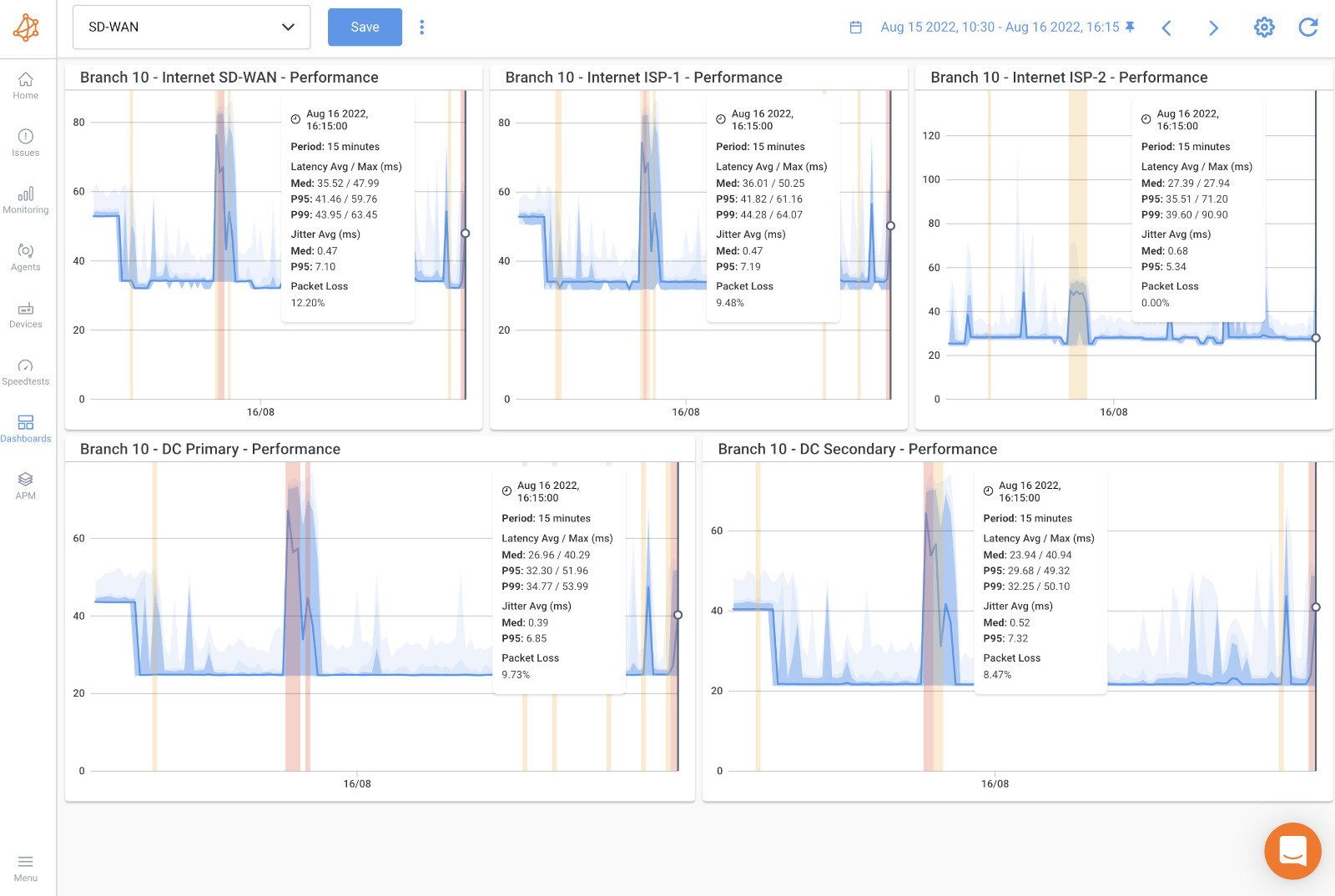
- Continuous Network Monitoring: The Monitoring Agents work round-the-clock, providing real-time insights into the performance of each network location. This continuous monitoring ensures that your IT team is always up-to-date on network status and potential issues.
- Cloud-based Analysis: With the data collected by the Agents, your remote IT staff can analyze the network's overall health and performance using Obkio's intuitive Chord Diagram and dashboards. These visualizations provide a clear and comprehensive overview of the distributed network's status.
- Remote Troubleshooting: When network issues arise, your remote IT staff can leverage the data collected by the Monitoring Agents to troubleshoot and identify the root cause of problems. The detailed performance metrics enable quick and efficient remote diagnosis.
- Centralized Management: Obkio's cloud-based SaaS application provides centralized management, enabling your remote IT staff to monitor and manage multiple network locations from a single dashboard.
When it comes to monitoring distributed networks, a centralized monitoring dashboard plays a crucial role in providing network administrators and IT teams with a comprehensive and real-time view of the entire network infrastructure.
That's where Obkio's customizable centralized dashboards comes in!
Create a centralized dashboard as a single point of access to aggregate and visualize data from all distributed nodes, enabling a holistic view of network performance and simplifying the troubleshooting process.
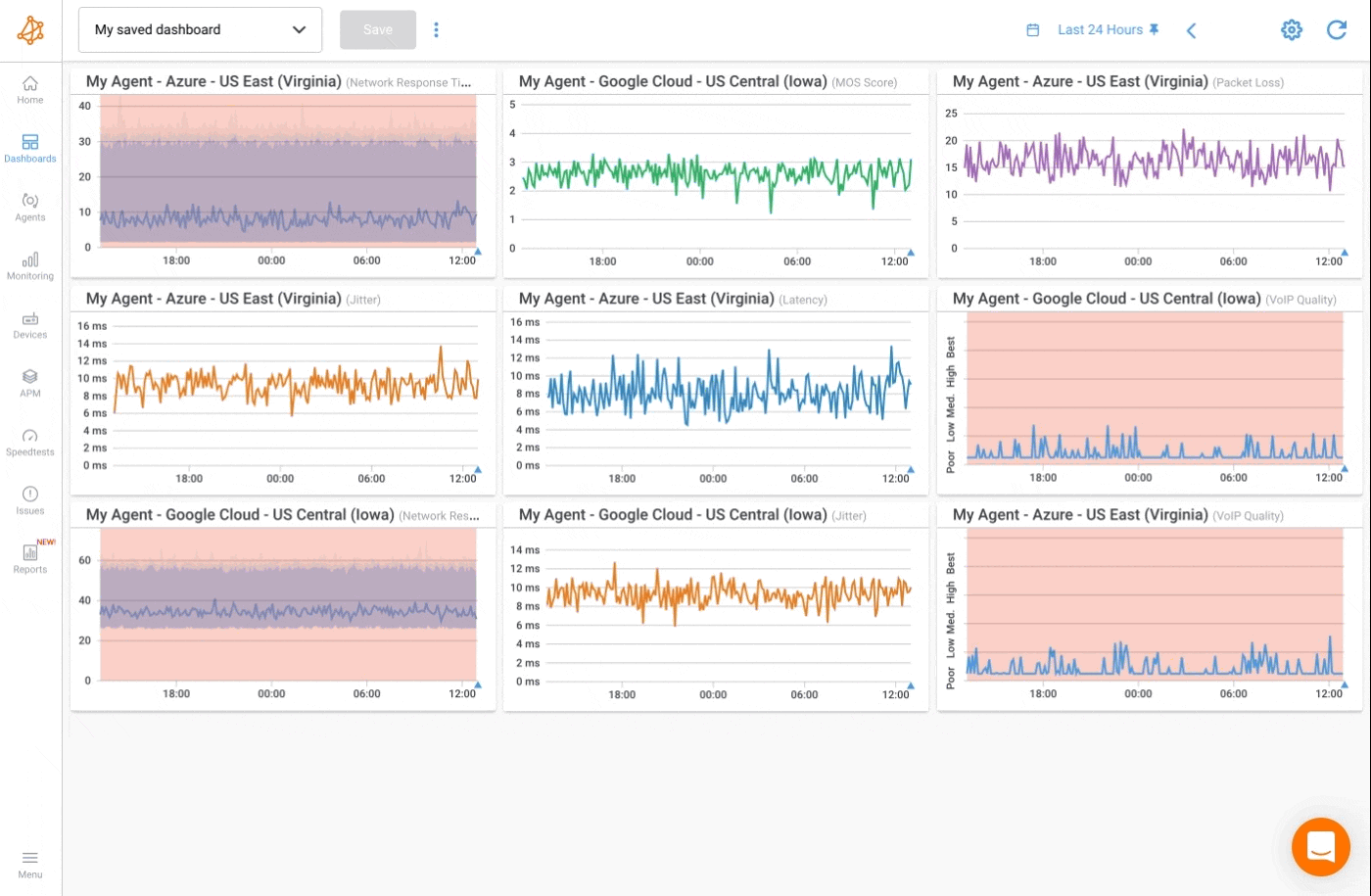

Here's how a centralized monitoring dashboard benefits monitoring distributed networks:
- Data Aggregation: In a distributed network, data is collected from various nodes, each producing its performance metrics and status updates. A centralized monitoring dashboard gathers all this data in one place, eliminating the need to access individual nodes separately.
- Real-time Insights: By receiving data in real-time, network administrators can quickly identify any emerging issues, potential bottlenecks, or performance anomalies. This empowers them to take timely action and resolve problems before they escalate.
- Simplified Troubleshooting: A centralized dashboard streamlines the troubleshooting process by offering a bird's-eye view of the entire network. Network administrators can identify patterns, trends, and correlations among different metrics to pinpoint the root cause of problems more efficiently.
- Holistic Network Visibility: With a centralized dashboard, administrators can get a holistic view of the entire distributed network's health, performance, and status. This overview helps in understanding how different components interact, ensuring better network management and optimization.
- Alert Management: The dashboard serves as a central hub for managing alerts generated from distributed nodes. Administrators can configure alert thresholds, prioritize critical alerts, and receive timely notifications about potential issues.
- Historical Analysis: The dashboard often includes historical data and trend analysis, allowing administrators to track network performance over time. Historical data helps in network capacity planning, identifying long-term performance trends, and making data-driven decisions.
A centralized monitoring dashboard is the backbone of monitoring distributed networks effectively. By having all essential data in one place, administrators can make informed decisions, ensure optimal network performance, and deliver a seamless user experience across the distributed network.
When monitoring distributed network performance, it’s extremely important to monitor continuously.
Anyone can run network tests sporadically when users complain about a performance issue. But what if you want to detect problems before they affect end-users? Or if you want to catch intermittent issues?
Continuously monitoring your distributed network locations allows you to proactively identify network problems before they affect users, and gives you a better chance of catching intermittent network problems, which appear and disappear sporadically.
This is why Obkio’s Monitoring Agents exchange synthetic traffic every 500ms, to continuously monitor performance to give you visibility of all your network locations, even when you’re not paying attention.
Continuously monitoring your network also allows you to analyze historical data and troubleshoot past network issues, as well as establish a network baseline to identify when your network performance has decreased from your baseline.
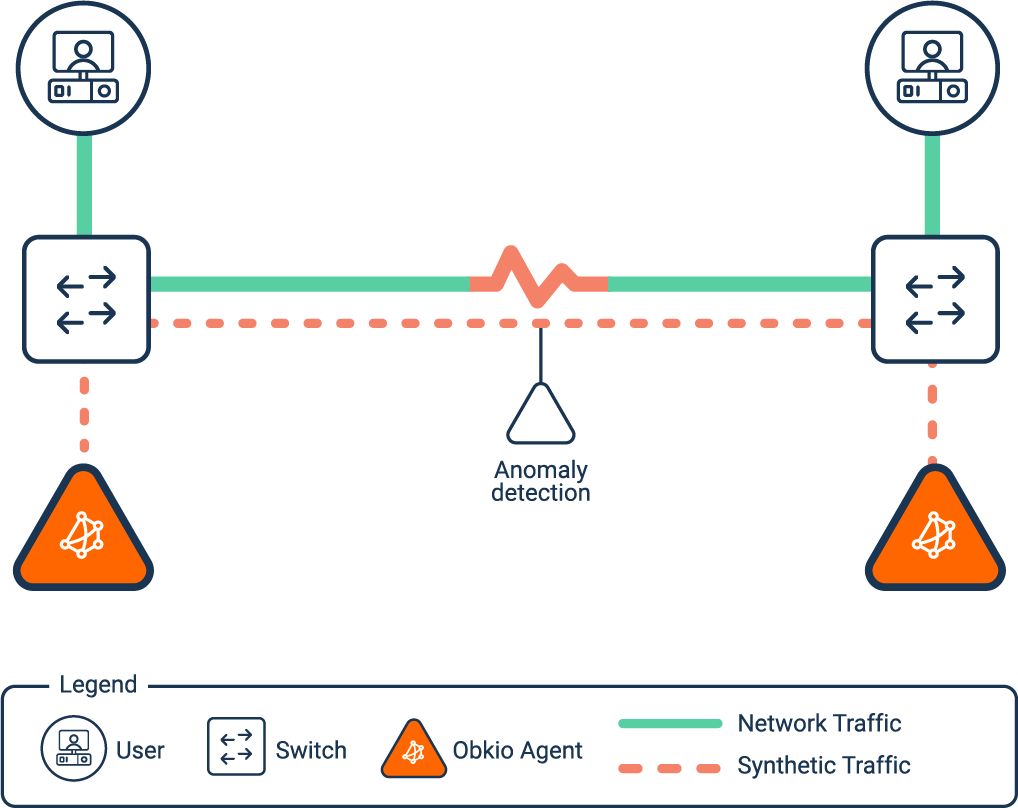
With this setup, you can now continuously monitor all locations in your distribution network infrastructure. Best of all is that, as your network grows, Obkio’s Network Performance Monitoring tool can scale with you.
As you add locations to your distributed network, you can easily deploy more Monitoring Agents in your locations, which is a flexibility not offered with traditional monitoring solutions.
At this point you can go on to identify any problems in your network, and troubleshoot internally, or externally with your Service Providers. Check out more articles to learn how:
Learn how to troubleshoot network issues by identifying where, what, why network problems occur with Network Troubleshooting tools.
Learn more

In a distributed network, network problems can occur at various points due to its complex and decentralized nature. Here are some common areas where network problems may arise in a distributed network:
- Network Nodes: Each node in the distributed network is a potential point of failure. Hardware issues, software glitches, or resource constraints on individual nodes can lead to network problems.
- Communication Links: The connections between nodes can experience problems, such as high latency, packet loss, or intermittent connectivity. These issues can disrupt data flow and communication within the network.
- Data Replication and Synchronization: In distributed databases or storage systems, problems with data replication and synchronization can lead to data inconsistencies and affect application performance.
- Load Balancing: If load balancing is not properly implemented, some nodes might become overloaded while others remain underutilized. This imbalance can lead to degraded performance and inefficient resource usage.
- Consensus Mechanisms (in Blockchain Networks): In distributed ledger systems like blockchain, consensus mechanisms can sometimes fail to agree on the validity of transactions, leading to forks or temporary network disruptions or network disconnections.
Once you've deployed your monitoring setup, it's important to note that network problems in a distributed network can happen at any place, any time. That's why it's important to continuously audit your network performance to identify issues and places for improvement.
A continuously network monitoring tool like Obkio can significantly simplify and enhance the periodic auditing process. Obkio's continuous monitoring solution automatically and actively collects performance data from distributed nodes at regular intervals. By using Obkio, network administrators gain real-time visibility into the health and performance of the entire network.
With Obkio's comprehensive monitoring capabilities, the need for manual audits is reduced, as the platform constantly monitors critical metrics and alerts administrators when deviations or issues occur. The platform's centralized dashboard offers an intuitive interface to visualize data from all nodes, simplifying the auditing process and facilitating prompt action when required.
Furthermore, Obkio's scalability and flexibility allow it to adapt seamlessly to changes in the distributed network, making it an ideal solution for evolving network infrastructures. By leveraging Obkio's continuous network monitoring capabilities, organizations can proactively manage their distributed networks, ensure data accuracy, and maintain a resilient and efficient network infrastructure without the burden of manual audits.
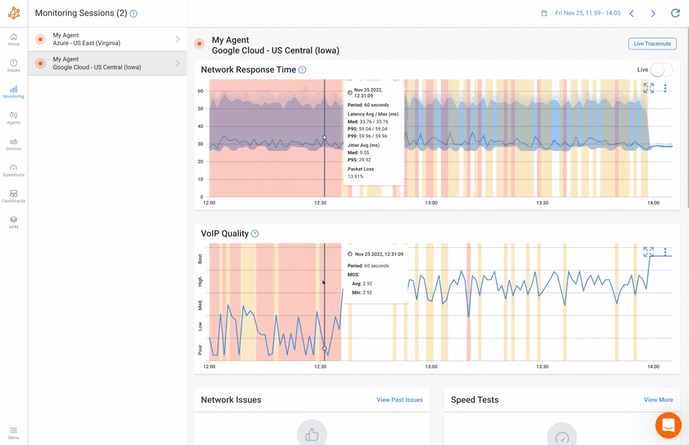
So when network problems arise, they can happen at any point in the network infrastructure, internally or externally. If they are intermittent, this makes them even more difficult to pinpoint.
This unpredictability and complexity underscore the critical need for monitoring distributed networks. By actively monitoring the network's performance and health, organizations can gain visibility into every network site and communication path, enabling them to identify and address issues promptly. Here's why monitoring is essential in such scenarios:
- Real-time Issue Identification: Distributed networks can have multiple interconnected nodes and communication paths. Monitoring provides real-time insights into the network's performance, allowing administrators to identify network problems as they arise.
- Visibility Across the Entire Network: A monitoring solution offers a comprehensive view of the entire distributed network, including all sites, connections, and nodes. This holistic visibility empowers administrators to pinpoint issues, regardless of where they occur.
- Isolating Intermittent Problems: Intermittent network problems can be elusive and difficult to diagnose without continuous monitoring. Monitoring tools can capture performance data during intermittent periods, facilitating troubleshooting efforts.
- Proactive Issue Resolution: Monitoring helps network administrators detect potential issues before they escalate into major problems. Proactive alerts and performance trends enable timely intervention, reducing network downtime and user impact.
- Optimization of Communication Paths: By running performance tests from all network sites, administrators can assess the efficiency of communication paths and identify potential bottlenecks. This information allows for better network optimization.
- Validation of Service Provider Performance: In cases where the distributed network relies on external service providers, monitoring can validate their performance against agreed-upon service level agreements (SLAs).
- Resource Allocation and Planning: Performance data from monitoring tools provides valuable insights for resource allocation and capacity planning. Administrators can allocate resources based on actual usage patterns and anticipated demands.
- Verification of Network Upgrades: When making changes to the network infrastructure, monitoring tools can validate the impact of upgrades or modifications, ensuring they improve rather than degrade performance.
- Compliance and Reporting: Monitoring helps organizations meet compliance requirements by providing evidence of network performance and adherence to security and data protection standards.
- Continuous Improvement: Ongoing monitoring enables continuous improvement of the distributed network. Analyzing historical data and trends allows organizations to implement data-driven optimizations and network enhancements.
In conclusion, monitoring a distributed network is a proactive and indispensable approach for ensuring and testing network stability, performance, and reliability. By regularly monitoring and running performance tests from all network sites, organizations can gain comprehensive visibility, promptly detect and troubleshoot issues, and optimize their network infrastructure for seamless communication and service delivery.


In this article, we've already discussed how and why distributed networks are the future of networking, offering unprecedented scalability, fault tolerance, and efficiency. However, as with any innovative technology, great power comes with added complexity.
To fully comprehend the potential of distributed networks and their impact on the networking landscape, it is crucial to understand how they differ from traditional centralized networks. Let's dive into the fundamental distinctions between these two network architectures, exploring the unique strengths and challenges that distributed networks bring to the forefront.
In a distributed network, the architecture is characterized by multiple interconnected nodes or computers that work collaboratively without a central point of control. Each node operates autonomously and has its own processing power, memory, and storage capabilities. Data and processing tasks are distributed across these nodes, enabling fault tolerance and resilience in case of node failures.
- Structure: In a distributed network, multiple nodes or computers are interconnected and work collaboratively to achieve common goals. These nodes can be geographically dispersed, and each node may have its own processing power, memory, and storage capabilities.
- Decentralization: Distributed networks lack a central point of control. Decision-making and data processing are distributed among the individual nodes, allowing for greater fault tolerance and resilience. There is no single point of failure that can bring down the entire network.
- Scalability: Distributed networks are highly scalable. New nodes can be added to the network to increase capacity and handle growing demands, making them suitable for large-scale applications.
- Data Redundancy: Data in distributed networks is often distributed across multiple nodes or replicated to ensure redundancy. This redundancy enhances fault tolerance and data availability.
- Complexity: Distributed networks can be more complex to manage due to the need to coordinate and synchronize data among multiple nodes. Monitoring, troubleshooting, and maintaining data consistency can present challenges.
- Examples: Peer-to-peer (P2P) file sharing systems, blockchain networks like Bitcoin and Ethereum, and content delivery networks (CDNs) are examples of distributed networks.
- Decentralization and Complexity: Distributed networks lack a central point of control, making monitoring more complex. Administrators must collect data from multiple nodes located in different geographic areas, each with its own set of performance metrics.
- Node Diversity: Distributed networks often consist of various types of nodes and devices, each contributing to the network's overall performance. Monitoring must account for the diverse hardware and software elements, requiring flexible monitoring tools.
- Latency and Packet Loss: In distributed networks, latency and packet loss can occur between nodes and locations, affecting application performance. Monitoring tools should capture and analyze these metrics to ensure optimal data flow.
- Data Synchronization: Monitoring must consider data synchronization and replication across distributed nodes, ensuring data consistency and reliability.

In contrast to distributed networks, centralized networks have a hierarchical structure with a central server or data center that serves as the primary point of control. All nodes or client devices connect to this central server for data processing, decision-making, and resource allocation.
- Structure: In a centralized network, all nodes or computers are connected to a central server or data center, which acts as a central point of control. The central server handles data processing, decision-making, and resource allocation.
- Central Point of Control: In contrast to distributed networks, centralized networks have a single point of control, which simplifies management and decision-making but can be a single point of failure.
- Scalability: Centralized networks may face challenges with scalability, as the central server may become overwhelmed with increasing demands. Scaling typically involves upgrading the central server, which can be costly.
- Data Management: Data in centralized networks is typically stored and managed in the central server or data center. This centralized data storage may make data access and retrieval faster, but it also poses a single point of vulnerability.
- Examples: Traditional client-server architectures, where client devices communicate with a central server, are examples of centralized networks.
- Central Point of Control: Centralized networks have a single point of control, making data collection and monitoring more centralized and straightforward. Most performance metrics can be captured directly from the central server or data center.
- Focus on Central Server: Monitoring primarily revolves around the central server's health and performance. CPU usage, memory utilization, and network throughput of the central server are critical metrics.
- Network Congestion: Monitoring centralized networks requires tracking potential network congestion around the central server, as it can impact the entire network's performance.
- Service Availability: Monitoring should ensure the continuous availability of the central server to prevent service disruptions.
- Capacity Planning: Monitoring network capacity and network utilization on the central server is vital to plan for future resource requirements.
- Uniformity: Centralized networks often have uniform hardware and software configurations, simplifying monitoring processes.
In practice, many modern networks are designed as hybrid network architectures that combine elements of both distributed and centralized networks. Hybrid networks leverage the strengths of each approach to meet specific needs.
For example, an organization might use a distributed network for data-intensive tasks that require high fault tolerance, while employing a centralized network for management and coordination. Hybrid networks offer flexibility and customization, allowing organizations to optimize network performance and efficiency according to their unique requirements.
The choice between distributed and centralized networks depends on the specific requirements and goals of the organization. Distributed networks are often preferred for their fault tolerance, scalability, and ability to handle large-scale data processing. However, they can be more complex to manage. Centralized networks, on the other hand, offer simplified management but may lack the redundancy and resilience of distributed networks.
In practice, many modern networks use a combination of both distributed and centralized elements, creating hybrid architectures that leverage the strengths of each approach to meet specific needs.
Hybrid networks, which combine elements of both distributed networks and centralized architectures, present unique challenges and opportunities for monitoring.
To ensure effective network monitoring for hybrid networks, network admins need to consider a few things:
- Integration of Centralized and Distributed Monitoring Approaches: In hybrid networks, monitoring tools from both centralized and distributed perspectives can be used. Integrating these tools is crucial to obtain a unified view of the network's health.
- Data Correlation and Analysis: With data coming from various monitoring tools and sources, it's essential to correlate the data to identify patterns, trends, and potential issues. This correlation enables administrators to gain a holistic understanding of the network's performance and quickly pinpoint the root cause of problems.
- Scalability and Flexibility: Hybrid networks often undergo changes in their distributed and centralized elements as the organization evolves. Monitoring solutions must be scalable and flexible to adapt to changing network configurations and accommodate future expansion.
- Granularity of Monitoring: Different parts of a hybrid network may require varying levels of monitoring granularity. For critical components, such as centralized servers, a more detailed and real-time monitoring approach might be necessary, while other less critical components may benefit from less frequent monitoring.
- Latency and Performance: Monitoring the latency and performance of data flow between distributed nodes and the central server is crucial in hybrid networks. Identifying any bottlenecks or latency issues can help optimize data distribution and improve overall network performance.
- Failover and Redundancy: Hybrid networks often implement network failover and redundancy mechanisms to ensure continuous operations. Monitoring these mechanisms is essential to verify their effectiveness and prompt detection of any failover events.
- Monitoring for Cloud-based Components: Many hybrid networks incorporate cloud services or applications. Monitoring tools should include cloud-specific monitoring capabilities to assess the performance and availability of cloud-based components.


Throughout this blog post, we explored the key challenges of monitoring distributed networks, the essential metrics to measure, and the network monitoring best practices for successful monitoring. We highlighted the importance of real-time monitoring, scalability, and proactive troubleshooting to maintain a resilient and efficient distributed network.
As organizations embrace the distributed network paradigm, it becomes crucial to select the right monitoring tool to meet the specific demands of this complex environment.
Basically, distributed networks are the future of networking, and you need a monitoring solution that can keep up.

Obkio's Network Monitoring tool empowers network administrators with continuous monitoring, providing real-time insights into the performance of distributed nodes, communication paths, and data synchronization. With its centralized dashboard, proactive alerting mechanisms, and scalability, Obkio streamlines the monitoring process, allowing you to focus on optimizing your distributed network's potential.
Don't wait for network issues to disrupt your operations. Embrace the future of monitoring with Obkio and gain full visibility and control over your distributed network.
Experience the power of proactive monitoring and seamless network management by trying Obkio today!
- 14-day free trial of all premium features
- Deploy in just 10 minutes
- Monitor performance in all key network locations
- Measure real-time network metrics
- Identify and troubleshoot live network problems



























 Obkio Blog
Obkio Blog





